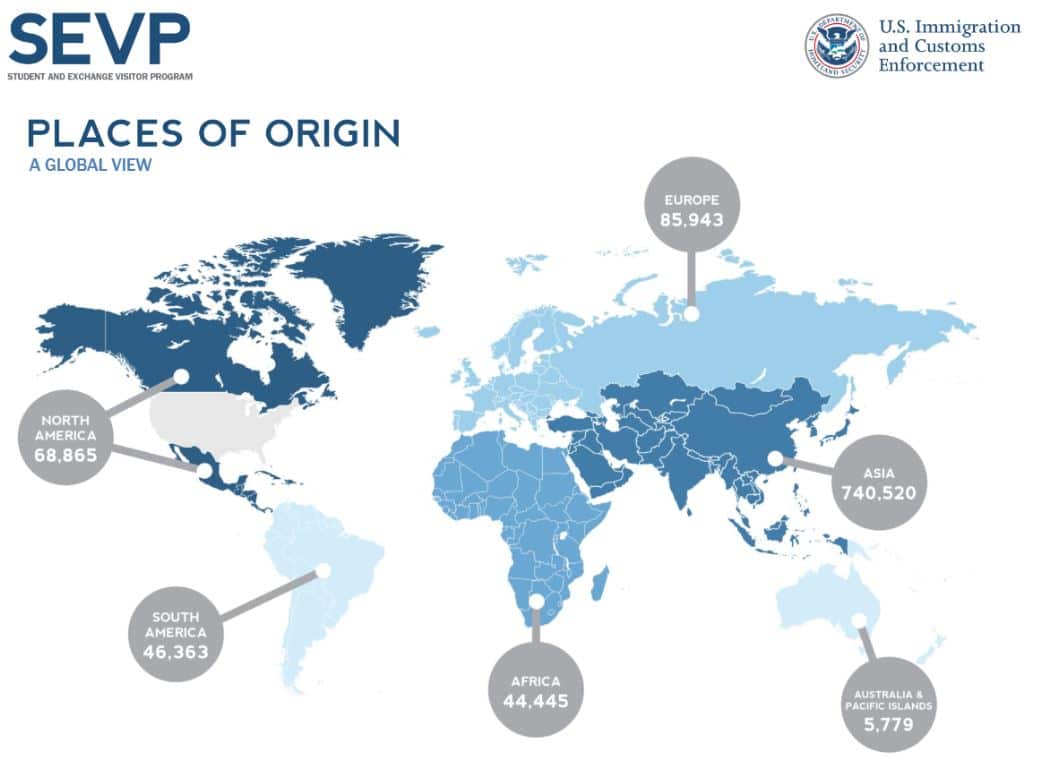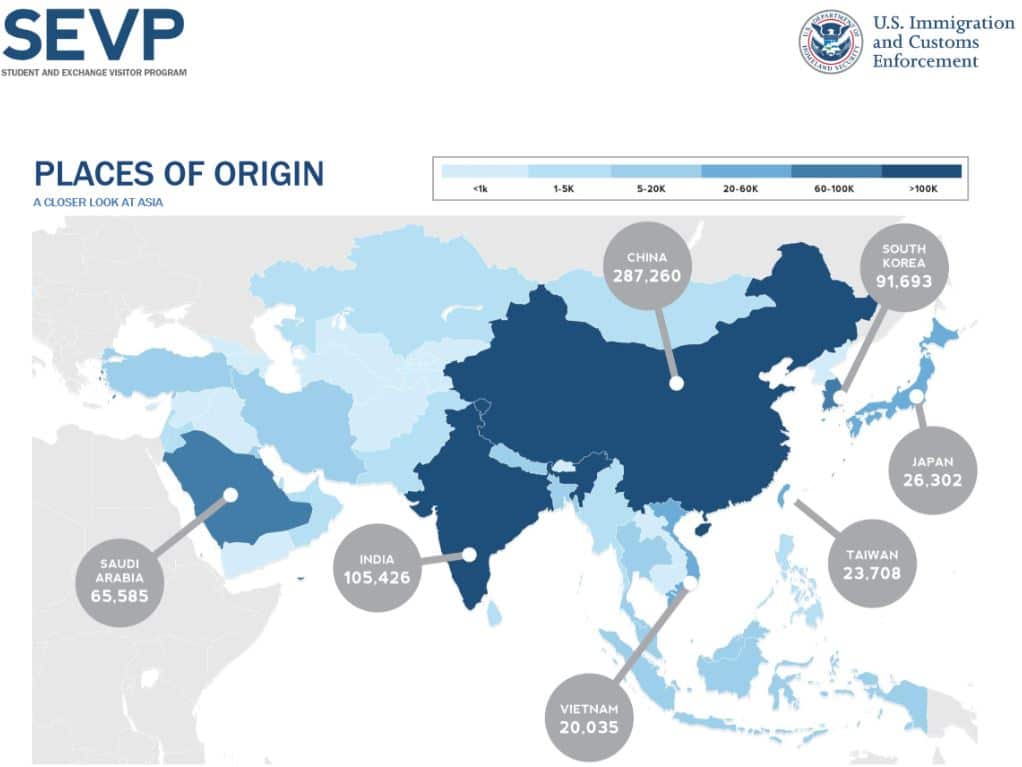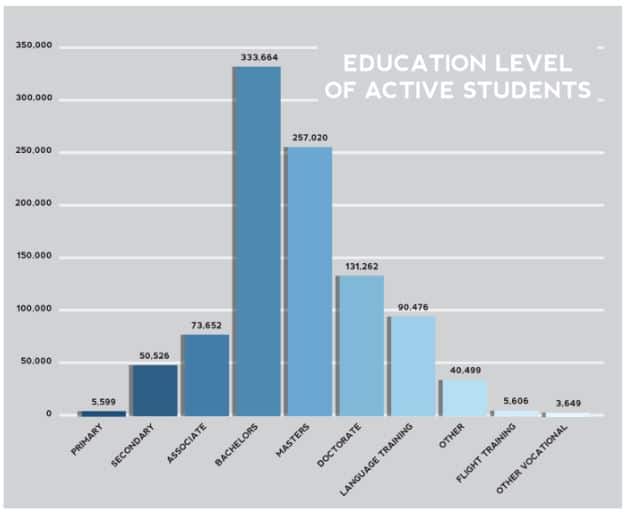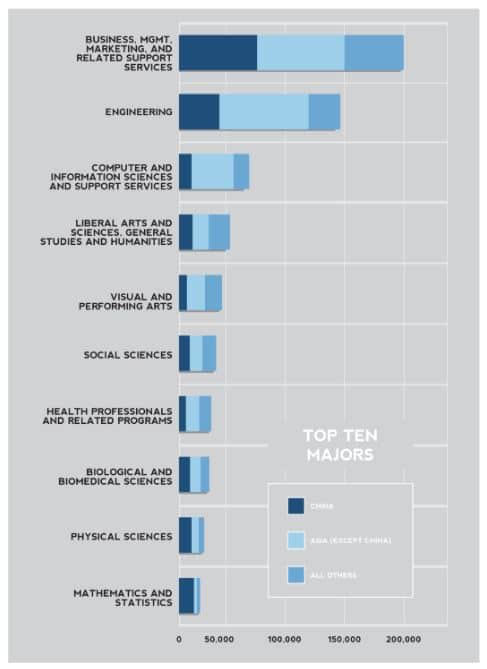New report provides real-time data on international students in US
The Student and Exchange Visitor Information System (SEVIS) tracks and monitors the status of international students in the US. It is primarily used by the US Department of Homeland Security (DHS) to “maintain information on the Student and Exchange Visitor Program (SEVP), certified schools, and the F and M students who come to the United States to attend those schools.” SEVIS also includes information on J-1 visa exchange visitor programme participants in the US. The system came online in 2003 and, since fall 2009, has released a series of quarterly reports entitled “SEVIS by the Numbers” that represent an important additional source of data on international students in the US. The Institute of International Education’s (IIE) Open Doors reports are widely referenced for in-depth findings and trends for foreign students in the US, but the SEVIS data is an interesting complement to sources such as Open Doors in a number of ways. First, the SEVIS system is web-based and its reports are based on real-time data that provide a snapshot of international students in America as of the report date. Open Doors, in contrast, is based on survey data from the previous year. Second, the SEVIS data casts a wider net to provide a more comprehensive view of international enrolment in the US. Open Doors is based on a survey of 3,000 accredited higher education institutions and so the focus is on those enrolled in academic study at US colleges. SEVIS data reflects all levels of education, including primary and secondary school enrolments. All told, the SEVIS data reflects statistics for the following US visa classes:
- F-1 nonimmigrant students: “non-immigrant students coming to the United States to pursue a full course of academic study in SEVP-certified schools;”
- M-1 nonimmigrant students: “non-immigrant nationals pursuing a full course of study at a SEVP-certified vocational or other recognised nonacademic institution (other than in language training programmes) in the United States;”
- J-1 exchange visitors: “non-immigrants approved to participate in work-and study-based exchange visitor programmes.”
The most recent "SEVIS by the Numbers" report was released on 15 January 2014. Because of its broader orientation and its currency, the report describes a larger population of international students than is found in the most recent Open Doors report.
SEVIS indicates that as of 15 January 2014, there were 991,957 international students enrolled in US schools (and holding F-1 or M-1 visas). Among those were 5,599 students enrolled in primary schools and a further 50,526 students in secondary school programmes. There were a further 179,253 students in the country on J-1 (exchange visitor) visas.
SEVIS echoes other data sources in pointing to Asia as the major region of origin for those 991,957 F-1 and M-1 visa holders. As the following illustration reflects, 74.65% of foreign students in the US come from Asia. The balance, in order of declining share of student population, came from Europe (8.66%), Canada or Mexico (6.94%), South America (4.67%), Africa (4.48%), and Australia (.58%).




















